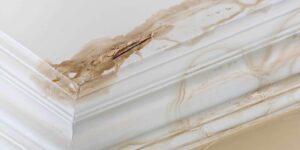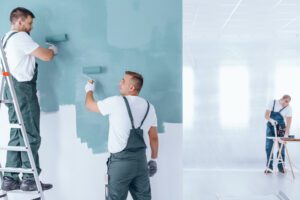
Mastering the Art of Spray Application
Spray painting has become more and more popular because it’s quick and makes things look smooth. But getting a perfect finish isn’t just about grabbing a spray can and a surface to paint. It takes practice and skill. This guide will tell you all about spray painting, from getting ready to use a to doing advanced tricks for a pro look.
Setting Up a Spray Paint System

If you want to use spray paint for your projects, you’ll need to set up a spray paint system. Don’t worry; it’s not as complicated as it sounds. Here are the basics explained in simple terms:
Gather Your Supplies
First, collect everything you need. This includes a spray gun, an air compressor (if your spray gun needs one), paint or primer, and safety gear like goggles and a mask.
Choose a Location
Find a good place to do your spray painting. It should be well-ventilated, so fresh air can come in. If you’re indoors, open windows and doors. If you’re outside, enjoy the natural air.
Prepare Your Surface
Make sure the thing you want to paint is clean and smooth. If there are any holes or cracks, fix them. Cleaning the surface is like getting it ready for a makeover.
Mix Your Paint
If you’re using paint, mix it as per the instructions on the paint can. Shake it well so it’s all smooth.
Set Up Your Spray Gun

Attach your titan paint sprayer gun to the air compressor if needed. Some spray guns use air to push the paint out. Make sure everything is connected properly.
Test Spray
Before you start on your project, do a test spray on a scrap piece of material. This helps you get used to how the spray gun works and check if the paint is coming out right.
Adjust Settings
Most spray guns let you adjust things like the spray pattern and the amount of paint coming out. Play around with these settings until you’re comfortable with how it works.
Start Painting
Now you’re ready to paint! Hold the spray gun at the right angle and distance from your surface. Use smooth, even strokes, and overlap each stroke slightly for an even coat.
Clean Up
After you’re done, clean your spray gun properly. Use the right cleaning materials and follow the instructions. Cleaning up is like tidying your room after playing – it keeps everything in order and ready for next time.
Getting Ready

Just like any painting job, you need to prepare well. This means cleaning the surface you want to paint, fixing any cracks or holes, and putting on a good base coat. Also, don’t forget to get all the stuff you need, like a good spray gun, the right paint, and safety gear such as goggles and a mask.
Choosing the Right Spray Gun

Having the right tools is super important for spray painting. The spray gun you pick can change how your project turns out. There are three main types: airless, HVLP (high-volume, low-pressure), and LVLP (low-volume, low-pressure). Each type is good for different jobs, so make sure you choose the right one for your project.
Doing It Right

To make your paint look smooth and even, you need to use the right techniques. Hold the spray gun at the right angle, keep it at the right distance from the surface, and move it smoothly. Overlap your strokes a bit to avoid weird patches or lines.
Advanced Tricks

If you want to take your painting to the next level, try these cool tricks:
Taping and Covering
Put tape or paper on the parts you don’t want to paint. This helps you get clean lines and not where you shouldn’t.
Blending Colors
Blend two colors together or make by lightly spraying one color onto another.
Smooth It Out
Use wet sandpaper to smooth any rough spots on the painted surface. Be careful not to scratch the paint.
Cleaning Up After Using Your Tools: Simple Tips

After you’re done using your tools, it’s essential to clean them properly. This keeps your tools in good shape and ready for the next project. Here are some simple tips for cleaning up:
Clean as Soon as Possible
Try to clean your tools as soon as you finish using them. Fresh paint or materials are easier to remove than dried ones.
Use the Right Cleaning Materials
Make sure to use the correct cleaning agents or solvents for your tools and the materials you used. Check the manufacturer’s recommendations if you’re not sure.
Safety First
Wear the appropriate safety gear, like gloves and goggles, when cleaning your tools. Some cleaning agents can be harsh on your skin or eyes.
Conclusion
With the right prep, tools, and tricks, anyone can become a spray painting pro. Whether you’re doing a small DIY project or a big painting job, these tips and tricks will help you get a good finish. Don’t forget to practice and try different techniques to see what works best for you.












